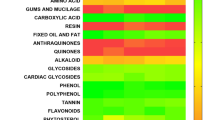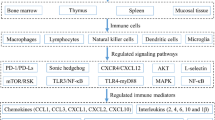Abstract
In recent years, the immune-modulatory role of all-trans astaxanthin from different pigment sources has been studied. It was reported that all-trans astaxanthin might exist as three stereoisomers, and the composition of all-trans stereoisomers in natural materials differs from that of synthetic products. However, the different biological effects of various all-trans stereoisomers still remain unclear. In the present study, we evaluated the bioactivity of three astaxanthin stereoisomers, (3S,3’S)-trans-, (3R,3’R)-trans-and meso-trans-astaxanthin, in regulating cell-mediated immune response using mice lymphocytes and peritoneal exudates cells (PECs) systems. After the treatment with three astaxanthin stereoisomers (20 μmol L−1), the lymphocyte proliferation capacity, neutral red phagocytosis of PECs and natural killer (NK) cell cytotoxic activity were comparatively assessed. The results showed that all three astaxanthin stereoisomers significantly promoted lymphocyte proliferation, phagocytic capacity of PECs, and cytotoxic activity of NK cells. Moreover, the (3S,3’S)-trans-astaxanthin exhibited a much higher response than others.
Similar content being viewed by others
References
Amar, E. C., Kiron, V., Satoh, S., and Watanabe, T., 2001. Influence of various dietary synthetic carotenoids on bio-defense mechanisms in rainbow trout, Oncorhynchus mykiss. Aquaculture Research, 32 (Suppl 1): 162–173.
Amar, E. C., Kiron, V., Satoh, S., and Watanabe, T., 2004. Enhancement of innate immunity in rainbow trout (Oncorhynchus mykiss Walbaum) associated with dietary intake of carotenoids from natural products. Fish & Shellfish Immunology, 16: 527–537.
Amar, E. C., Kiron, V., Satoh, S., Okamoto, N., and Watanabe, T., 2002. Effects of dietary ß-carotene on the immune response of rainbow trout Oncorhynchus mykiss. Fisheries Science, 66: 1068–1075.
Ambati, R. R., Phang, S. M., Ravi, S., and Aswathanarayana, R. G., 2014. Astaxanthin: Sources, extraction, stability, biological activities and its commercial applications–A review. Marine Drugs, 12: 128–152.
Bar, E., Rise, M., Vishkautsan, M., and Arad, S., 1995. Pigment and structural changes in Chlorella zofingiensis upon light and nitrogen stress. Journal of Plant Physiology, 146: 527–534.
Bjerkeng, B., Peisker, M., Schwartzenberg, K., Ytrestøyl, T., and Åsgård, T., 2007. Digestibility and muscle retention of astaxanthin in Atlantic salmon, Salmo salar, fed diets with the red yeast Phaffia rhodozyma in comparison with synthetic formulated astaxanthin. Aquaculture, 269: 476–489.
Bjerkeng, B., Storebakken, T., and Liaaen-Jensen, S., 1992. Pigmentation of rainbow trout from start feeding to sexual maturation. Aquaculture, 108: 333–346.
Bon, J. A., Leathers, T. D., and Jayaswal, R. K., 1997. Isolation of astaxanthin-overproducing mutants of Phaffia rhodozyma. Biotechnology Letters, 19: 109–112.
Cao, Q. Z., and Lin, Z. B., 2004. Antitumor and anti-angiogenic activity of Ganoderma lucidum polysaccharides peptide. Acta Pharmacologica Sinica, 25: 833–838.
Chew, B. P., Mathison, B. D., Hayek, M. G., Massimino, S., Reinhart, G. A., and Park, J. S., 2011. Dietary astaxanthin enhances immune response in dogs. Veterinary Immunology and Immunopathology, 140: 199–206.
Chew, B. P., Wong, M. W., Park, J. S., and Wong, T. S., 1999. Dietary beta-carotene and astaxanthin but not canthaxanthin stimulate splenocyte function in mice. Anticancer Research, 19: 5223–5227.
Choubert, G., Mendes-Pinto, M. M., and Morais, R., 2006. Pigmenting efficacy of astaxanthin fed to rainbow trout Oncorhynchus mykiss: Effect of dietary astaxanthin and lipid sources. Aquaculture, 257: 429–436.
David, J. N., and Gordon, M. C., 2012. Natural products as sources of new drugs over the 30 years from 1981 to 2010. Journal of Natural Product, 75: 311–335.
Fan, L., Vonshak, A., Gabbay, R., Hirshberg, J., Cohen, Z., and Bous-siba, S., 1995. The biosynthetic pathway of astaxanthin in a green alga Haematococcus pluvialis as indicated by inhibition with diphenylamine. Plant and Cell Physiology, 36: 1519–1524.
Govindaraj, J., Emmadi, P., and Puvanakrishmam, R., 2010. In vitro studies on inhibitory effect of proanthocyanidins in modulation of neutrophils and macrophages. Indian Journal of Biochemistry & Biophysics, 47: 141–147.
Guerra, B. A., and Otton, R., 2011. Impact of the carotenoid astaxanthin on phagocytic capacity and ROS/RNS production of human neutrophils treated with free fatty acids and high glucose. International Immunopharmacology, 11: 2220–2226.
Guerra, B. A., Bolin, A. P., Morandi, A. C., and Otton R., 2012. Glycolaldehyde impairs neutrophil biochemical parameters by an oxidative and calcium-dependent mechanism-protective role of antioxidants astaxanthin and vitamin C. Diabetes Research and Clinical Practice, 98: 108–118.
Jurisic, V., Spuzic, I., and Konjevic, G., 1999. A comparison of the NKcell cytotoxicity with effects of TNF-a against K-562 cells, determined by LDH release assay. Cancer Letters, 138: 67–72.
Jyonouchi, H., Hill, R. I., Tomita, Y., and Good, R. A., 1991. Studies of immunomodulating actions of carotenoids. I. Effects of beta-carotene and astaxanthinon murine lymphocyte functions and cell surface marker expression in in vitro culture system. Nutrition and Cancer, 16: 93–105
Jyonouchi, H., Zhang, L., and Tomita, Y., 1993. Studies of immunomodulating actions of carotenoids. II. Astaxanthin enhances in vitro antibody production to T-dependent antigens without facilitating polyclonal B-cell activation. Nutrition and Cancer, 19: 269–280.
Jyonouchi, H., Zhang, L., Gross, M., and Tomita, Y., 1994. Immunomodulating actions of carotenoids: Enhancement of in vivo and in vitro antibody production to T-dependent antigens. Nutrition and Cancer, 21: 47–58
Kawakami, T., Tsushima, M., Katabami, Y., Mine, M., Ishida, A., and Matsuno, T., 1998. Effect of ß, ß-carotene, ß-echinenone, astaxanthin, fucoxanthin, vitamin A and vitamin E on the biological defense of the sea urchin Pseudocentrotus depressus. Journal of Experimental Marine Biology and Ecology, 226: 165–174.
Konjevic, G., Juriš ic, V., and Spuzic, I., 1997. Corrections to the original lactate dehydrogenase (LDH) release assay for the evaluation of NK cell cytotoxicity. Journal of Immunological Methods, 200: 199–201.
Kurihara, H., Koda, H., Asami, S., Kiso, Y., and Tanaka, T., 2002. Contribution of the antioxidative property of astaxanthin to its protective effect on the promotion of cancer metastasis in mice treated with restraint stress. Life Sciences, 70: 2509–2520.
Macedo, R. C., Bolin, A. P., Marin, D. P., and Otton, R., 2010. Astaxanthin addition improves human neutrophils function: in vitro study. European Journal of Nutrition, 49: 447–457.
Moretta, A., Bottino, C., Mingari, M. C., Biassoni, R., and Moretta, L., 2002. What is a natural killer cell? Nature Immunology, 3: 6–8.
Moretti, V. M., Mentasti, T., Bellagamba, F., Luzzana, U., Caprino, F., Turchini, G. M., Giani, I., and Valfrè, F., 2006. Determination of astaxanthin stereoisomers and colour attributes in flesh of rainbow trout (Oncorhynchus mykiss) as a tool to distinguish the dietary pigmentation source. Food Additives and Contaminants, 23: 1056–1063.
Mosmann, T., 1983. Rapid colorimetric assay for cellular growth and survival: Application to proliferation and cytotoxicity assays. Journal of Immunological Methods, 65: 55–63.
Nakano, T., Kanmuri, T., Sato, M., and Takeuchi, M., 1999. Effect of astaxanthin rich red yeast (Phaffia rhodozyma) on oxidative stress in rainbow trout. Biochimica et Biophysica Acta, 1426: 119–125.
Otani, H., and Monnai, M., 1993. Inhibition of proliferative responses of mouse spleen lymphocytes by bovine milk casein digests. Food and Agricultural Immunology, 5: 219–229.
Park, J. S., Chyun, J. H., Kim, Y. K., Line, L. L., and Chew, B. P., 2010. Astaxanthin decreased oxidative stress and inflammation and enhanced immune response in humans. Nutrition Metabolism and Cardiovascular Diseases, 7: 18–27.
Park, J. S., Mathison, B. D., Hayek, M. G., Massimino, S., Reinhart, G. A., and Chew, B. P., 2011. Astaxanthin stimulates cell-mediated and humoral immune responses in cats. Veterinary Immunology and Immunopathology, 144: 455–461.
Rao, A. R., Baskaran, V., Sarada, R., and Ravishankar, G. A., 2013. In vivo bioavailability and antioxidant activity of carotenoids from micro algal biomass–A repeated dose study. Food Research International, 54: 711–717.
Rao, A. R., Sindhuja, H. N., Dharmesh, S. M., Sankar, K. U., Sarada, R., and Ravishankar, G. A., 2013. Effective inhibition of skin cancer, tyrosinase, and antioxidative properties by astaxanthin and astaxanthin esters from the green alga Haematococcus pluvialis. Journal of Agricultural and Food Chemistry, 61: 3842–3851.
Santos, S. D., Cahú, T. B., Firmino, G. O., de Castro, C. C., Carvalho, L. B. J., Bezerra, R. S., and Filho, J. L., 2012. Shrimp waste extract and astaxanthin: Rat alveolar macrophage, oxidative stress and inflammation. Journal of Food Science, 77: 141–146.
Schroeder, W. A., and Johnson, E. A., 1993. Antioxidant role of carotenoids in Phaffia rhodozyma. Microbiology, 139: 907–912.
Storebakken, T., Foss, P., Austreng, E., and Liaaen-Jensen, S., 1985. Carotenoids in diets for salmonids: II. Epimerization studies with astaxanthin in Atlantic salmon. Aquaculture, 44: 259–269.
Sun, W. H., Lin, H., Zhai, Y. X., Leng, K. L., and Xing, L. H., 2014. Separation, purification and identification of (3R,3’R)-trans-astaxanthin from Phaffia rhodozyma. Food Science, 35(11): 79–82 (in Chinese with English abstract).
Takimoto, T., Takahashi, K., and Akiba, Y., 2007. Effect of dietary supplementation of astaxanthin by Phaffia rhodozyma on lipid peroxidation, drug metabolism and some immunological variables in male broiler chicks fed on diets with or without oxidised fat. British Poultry Science, 48: 90–97.
Thompson, I., Choubert, G., Houlihan, D. F., and Secombes, C. J., 1995. The effect of dietary vitamin A and astaxanthin on the immunocompetence of rainbow trout. Aquaculture, 133: 91–102.
Turujman, S. A., Wamer, W. G., Wei, R. R., and Albert, R. H., 1997. Rapid liquid chromatographic method to distinguish wild salmon from aquacultured salmon fed synthetic astaxanthin. Journal of AOAC International, 80: 622–632.
Wang, C. L., Armstrong, D. W., and Chang, C. D., 2008. Rapid baseline separation of enantiomers and a mesoform of alltrans-astaxanthin, 13-cis-astaxanthin, adonirubin, and adonixanthin in standards and commercial supplements. Journal of Chromatography A, 1194: 172–177.
Yaqoob, P., Knapper, J. A., Webb, D. H., Williams, C. M., Newsholme, E. A., and Calder, P. C., 1998. Effect of olive oil on immune function in middle-aged men. American Journal of Clinical Nutrition, 67: 129–135.
Yokota, T., Oritani, K., Takahashi, I., Ishikawa, J., Matsuyama, A., Ouchi, N., Kihara, S., Funahashi, T., Tenner, A. J., Tomiyama, Y., and Matsuzawa, Y., 2000. Adiponectin, a new member of the family of soluble defense collagens, negatively regulates the growth of myelomonocytic progenitors and the functions of macrophages. Blood, 96: 1723–1732.
Author information
Authors and Affiliations
Corresponding author
Rights and permissions
About this article
Cite this article
Sun, W., Xing, L., Lin, H. et al. Assessment and comparison of in vitro immunoregulatory activity of three astaxanthin stereoisomers. J. Ocean Univ. China 15, 283–287 (2016). https://doi.org/10.1007/s11802-016-2716-3
Received:
Revised:
Accepted:
Published:
Issue Date:
DOI: https://doi.org/10.1007/s11802-016-2716-3




